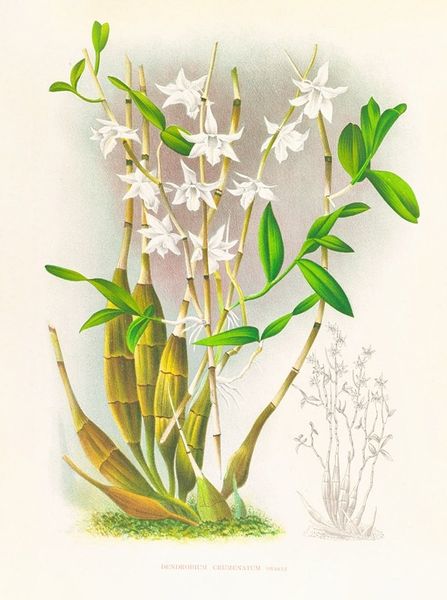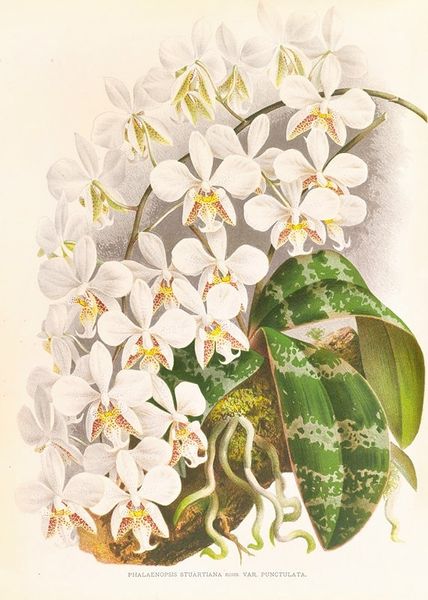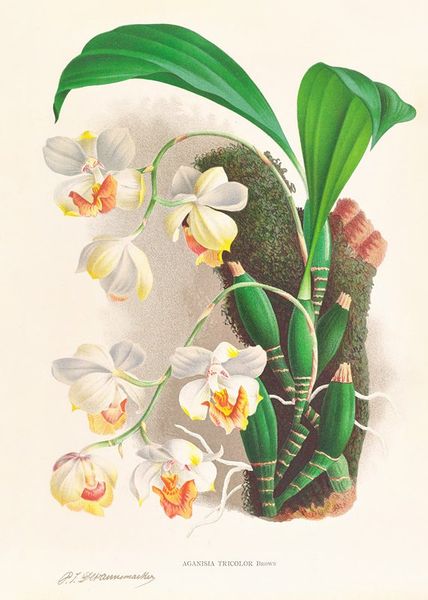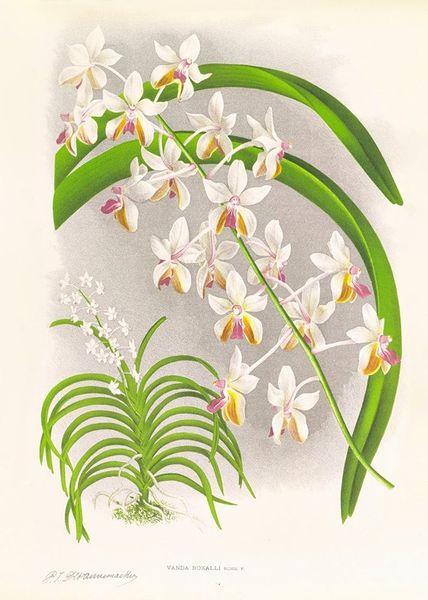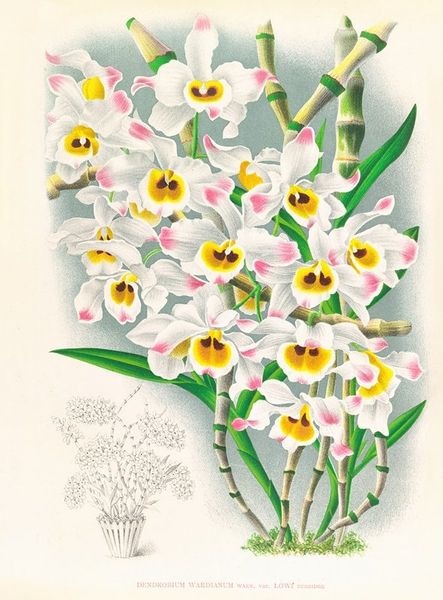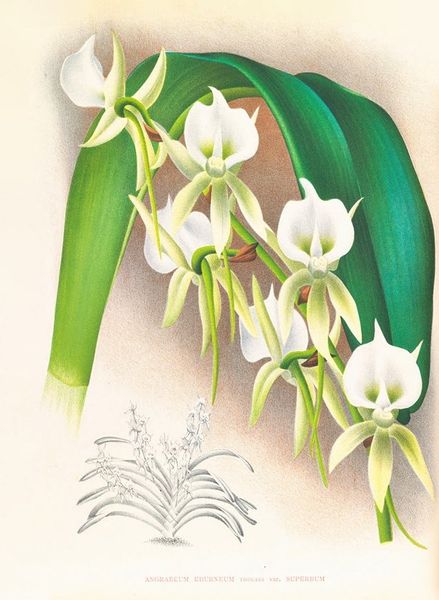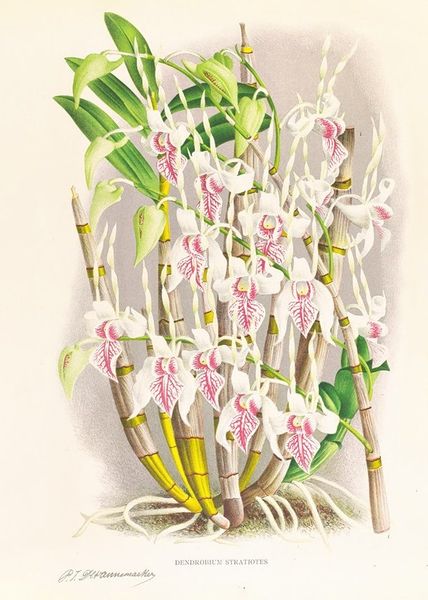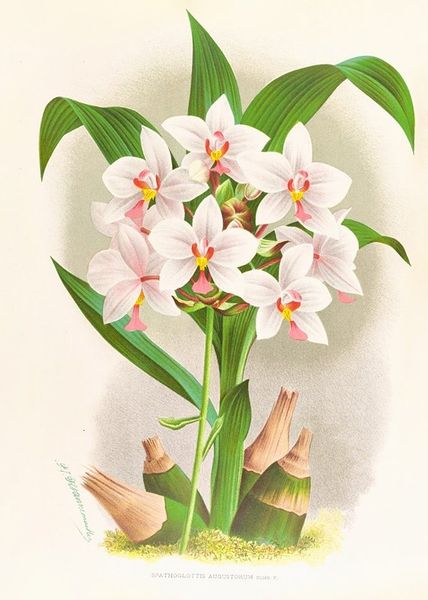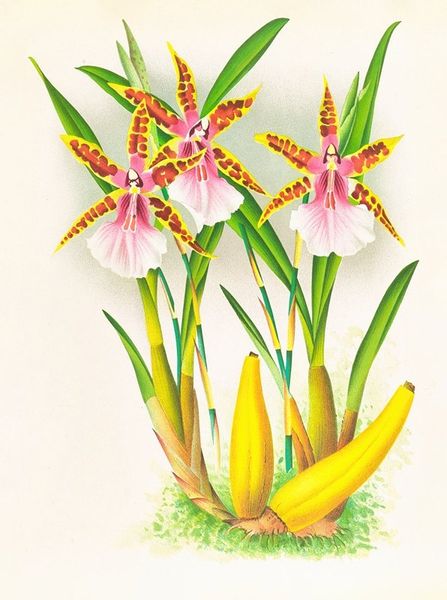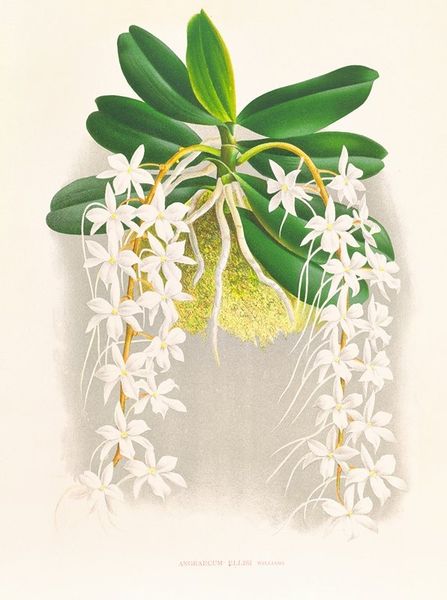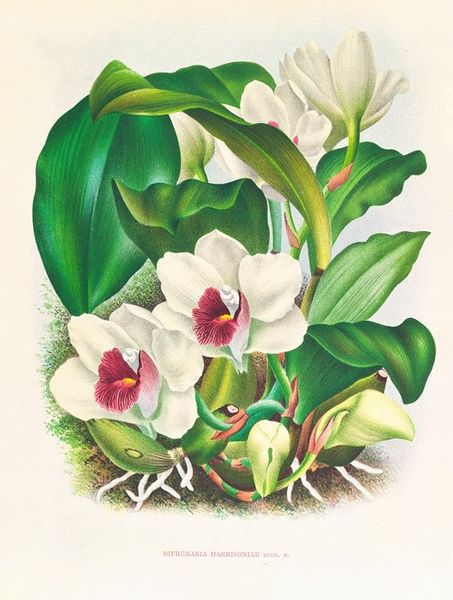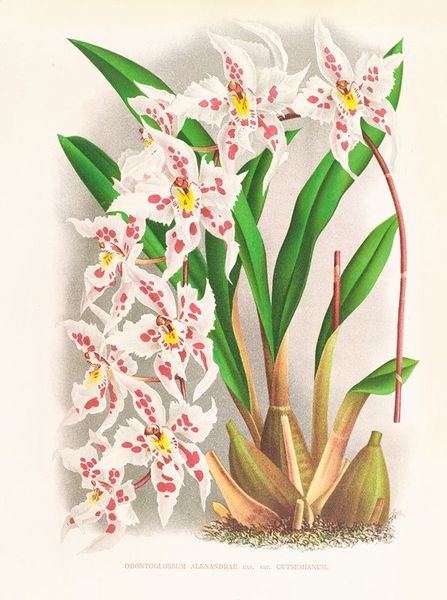
Copyright: Public Domain: Artvee
Editor: This botanical illustration, Dendrobium thyrsiflorum, likely painted between 1885 and 1906 by Jean Jules Linden, is absolutely striking. The contrast between the bright green stalks and the delicate white and yellow flowers creates such a cheerful mood. What's your interpretation of this piece? Curator: Well, beyond its aesthetic appeal, it’s crucial to situate this botanical illustration within the historical context of colonialism and scientific exploration. These depictions of flora weren't merely artistic endeavors, but rather tools employed by European powers to document, classify, and ultimately exploit natural resources in colonized territories. Who benefits from this knowledge, and at what cost? Editor: That’s a fascinating point; I hadn't considered the implications of the time period. So, this isn’t just a pretty flower? Curator: Precisely. We have to consider that botanical illustrations like this fueled the scientific understanding of new species, which then informed agricultural and commercial interests, all deeply intertwined with colonial expansion and exploitation. Think about who had access to this imagery and how it was used to support specific economic and political agendas. Editor: So, it highlights the power dynamics embedded even within seemingly innocuous subjects like botanical art? Curator: Exactly. It challenges us to think critically about how knowledge is produced and disseminated and whose interests are being served in the process. It's about recognizing the intersection of art, science, and power in shaping our understanding of the natural world. How can contemporary art practices learn from this colonial legacy? Editor: That gives me a lot to consider when viewing similar pieces in the future! I guess I'll never look at botanical art the same way. Curator: And that's the goal – to foster a more informed and critically aware engagement with art and its complex histories.
Comments
No comments
Be the first to comment and join the conversation on the ultimate creative platform.
